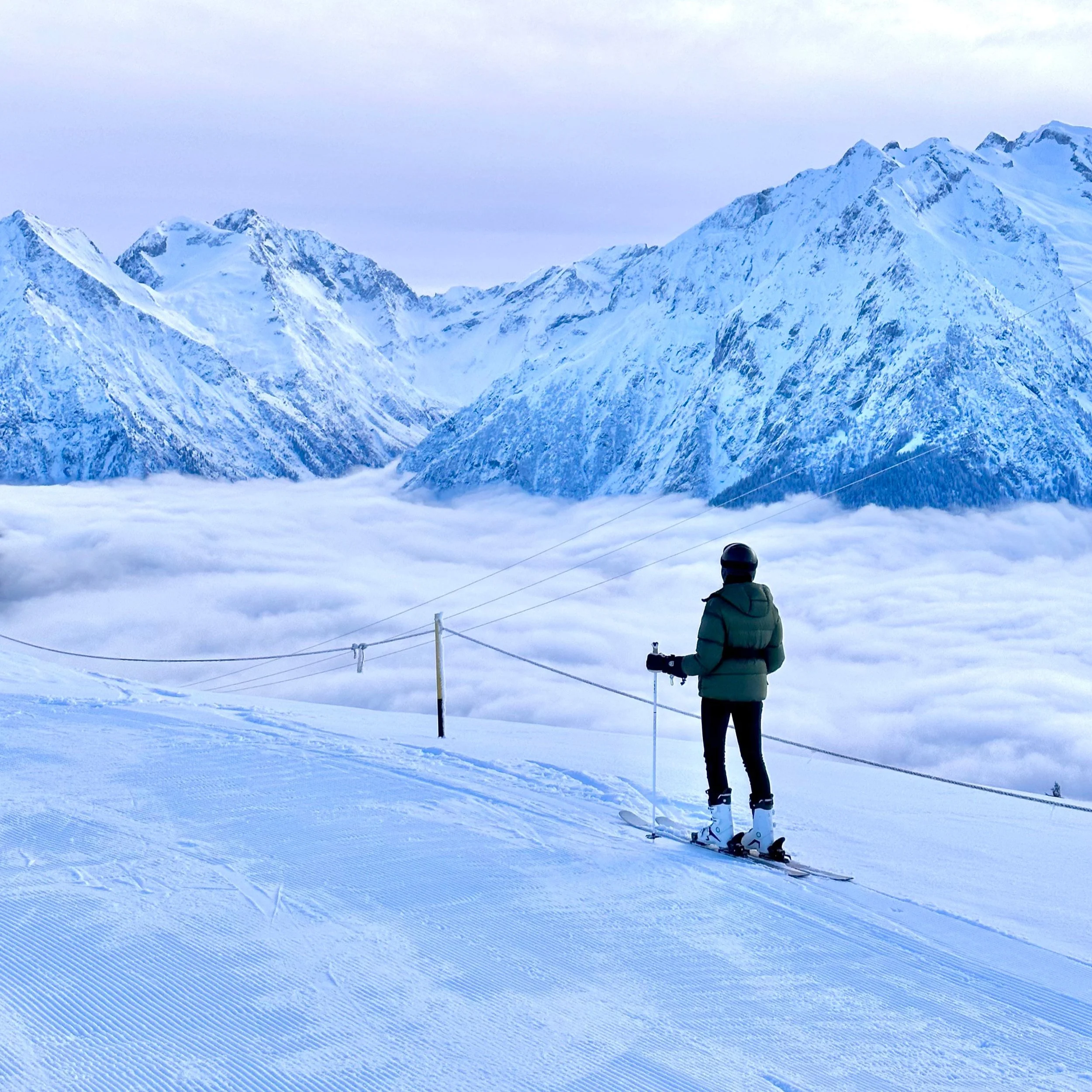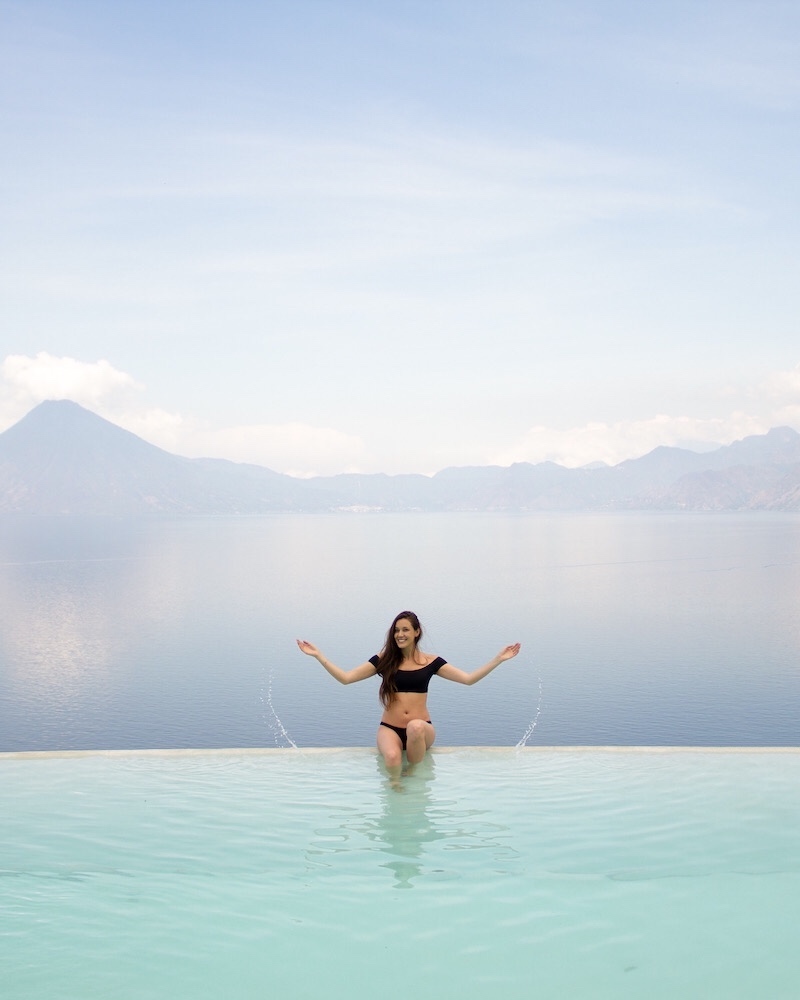Practical Safety Tips for Skiing Alone On-piste
/Thanks to the flexibility my remote-work lifestyle allows, I’ve been able to make skiing, my favorite sport, a priority over the last few years. Each ski season, I relocate to the mountains for at least a month to be able to explore a new region and access its ski areas, whether or not anyone else is able to join me.
My attitude toward solo travel has enabled a majority of the most memorable adventures I’ve experienced, and has greatly influenced my attitude toward solo skiing. It’s important to note that my personal definition of a solo traveler doesn’t mean someone is always alone— but rather is making her own decisions about when, why, and how she travels. Similarly, a solo skier isn’t necessarily always alone, but rather is making her own decisions about when, why, and how she goes to and experiences the mountain. I’ve written about the many benefits of solo skiing here, but you can continue reading this article for a few of my top tips for staying safe while skiing alone.
As with any travel experience or practice of a physical sport, it’s important to exercise caution and be safe. Following a few practical safety tips each day that you plan on skiing alone can ensure that you have a great experience and can focus on having fun, improving your skills, and enjoying the beauty of the outdoors.
Very important note: all of the claims and recommendations made in this article are based on my own experiences skiing alone on-piste, within bounds of designated ski stations or resorts. I would never recommend skiing alone off-piste or in the backcountry.
Is it safe to ski alone? It can be if you follow a few practical tips:
1. Always stay within sight or within earshot of a lift or a trail
Though I don’t recommended skiing off-piste alone, it’s possible you may find that a maintained trail or run within a resort may lead you through trees or glades, and on a day after heavy snow, the boundaries of a piste may not be easily distinguishable. If you need to call out to someone to ask for help, it’s much easier to do so if you’re close to the trail or a lift.
2. Get familiar with the trail maps and check status before you go
When skiing alone, one of the skills that will certainly become sharper will be your ability to navigate lift and trail maps. Taking a moment to study a ski resort or station’s trail map ahead of time will help you become more familiar with the lifts you’ll need to take to access certain areas, and will help you remember which trails you’ll need to ski in order to get back down to your car or to the village. A ski resort or station’s website will usually have a tool that indicates the live status of all of their lifts and trails, so you can plan accordingly if part of your intended route happens to be closed.
3. Wear bright, visible colors
Wearing colorful clothes can make you more visible to others while skiing, which can be helpful on any day— but can be essential on a day when the weather can change drastically and visibility can become poor. These days aren’t always easy to predict, and I’ve found myself in situations where a fog or a storm rolled in quickly and visibility changed from great to nearly zero in a matter of minutes.
Wearing high-visibility colors can help other skiers and patrollers spot you easily, and I personally love my bright yellow set from Halfdays (I have the The Aston Jacket and Alessandra Pant in color Lightning, but they offer a ton of different options).
4. Always let someone know what station or resort you plan on skiing
This can be a quick text to a friend or family member before you head out to ski, or by automatically sharing your location through a service like Apple’s Find my Friends or the Slopes App, which lets you share a link that anyone can access via a web browser to see your live location while skiing.
5. Consider taking a course for avalanche awareness
Having a false sense of security in terrain you assume is safe can be more dangerous than consciously skiing in terrain that you know is more challenging. Becoming a bit more familiar with weather patterns and snow conditions will help you gain insight into the potential dangers that can exist on the mountain, even within the boundaries of a ski resort. I’ve only taken one day of an avalanche awareness course (with the Avalanche Academy in Chamonix— which I highly recommend!) thus far, and the training and information that was covered in the session was eye-opening, extremely valuable, and is motivating me to continue my mountain education and familiarization in an organized manner with professionals.
6. Use RECCO reflectors to be more searchable
Though it is not a replacement for avalanche training, transceivers, or other avalanche gear, RECCO reflectors can be used to make you more searchable to professional rescue teams based in ski stations or resorts. RECCO reflectors work by bouncing a signal administered by a RECCO detector, and do not require any training or maintenance for the wearer. Many ski apparel brands embed RECCO reflectors in their jackets and pants, but you can also buy individual reflectors (on Amazon) that can be easily attached to a helmet or a backpack.
7. Keep your lines predictable, and never carve all the way out to the edge of a run
This tip is helpful regardless if you are skiing alone or with other people, but maintaining a predictable line when you’re making your way down the piste will help nearby skiers gauge their speed and distance so they can avoid you. Another helpful safety tip is to always keep some distance from the very edge of a run, to avoid getting in the way of a faster skier that is using that stretch to overtake.
8. Skip the music and avoid wearing headphones or earbuds
When I started to ski alone I used to wear earbuds and listen to music since I didn’t really have to talk to anybody, however I’ve since quit that habit. While listening to a great playlist can be a nice complement to your solo skiing experience, it can lower your awareness of your surroundings. If someone needs to get your attention and is calling out to you, it may be harder to hear them if you’re listening to music. Similarly, if I was in a situation where I was in need of help and had to call out to a stranger, I would hope they didn’t have music blasting in their ears.
9. Always end your day earlier than you plan
One benefit of skiing solo is having the freedom to decide when you’re done for the day. As a rule of thumb, I tend to call it a day one run before I think I should to avoid pushing myself. As I’m skiing and thinking about eventually heading back in or down to the car, as soon as I hear myself saying “I could do one more run after this”, that’s exactly when I stop. Also keep in mind that usually at the end of the day, you may have to ski though poor conditions and crowded beginner areas where your senses and reflexes need to be the most sharp, so it’s advisable to never overexert yourself before that point.
Over the last few years, I’ve skied more than eighty days alone in stations and resorts across California, Colorado, Canada, France, Austria, Italy, Finland, and Switzerland. I’m grateful that due to the sheer amount of time I’ve put into practicing the sport, my skill has drastically improved from where I was just a few years ago. As with any individual sport, following practical tips while skiing alone can help you have a safer and more relaxed experience, as well as help you develop your skills so that any ski trip you take in the future (whether you’re alone or with others) will be more safe and more fun.
Are you a fan of solo skiing and have any safety tips to add, or are considering venturing out to explore a ski station or resort on your own and have questions about my experience? Let me know in the comments below!
About the author
Meet Carina Otero, avid skier and the creator of She is Not Lost, an online community for celebrating female travelers and a blog providing helpful tips, useful information, and inspiration for your future travels. Carina’s passion for skiing and love of writing and photography have inspired a new blog to share her experiences and personal favorites relating to the sport:
Discover Ski is Not Lost
This post may contain affiliate links and at no cost to you, I may earn a commission which allows me to keep this site free for all readers. I only recommend properties, products, brands, and services that I personally use and believe in.






































